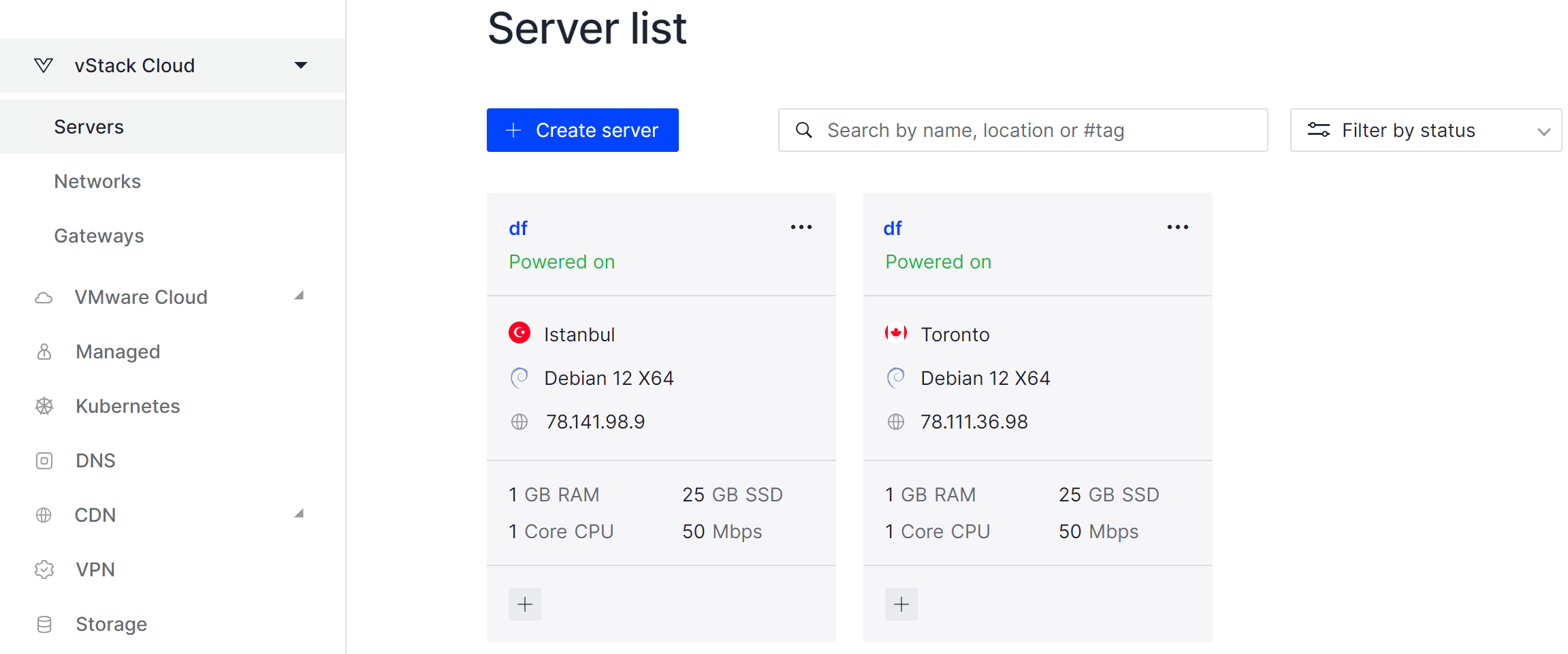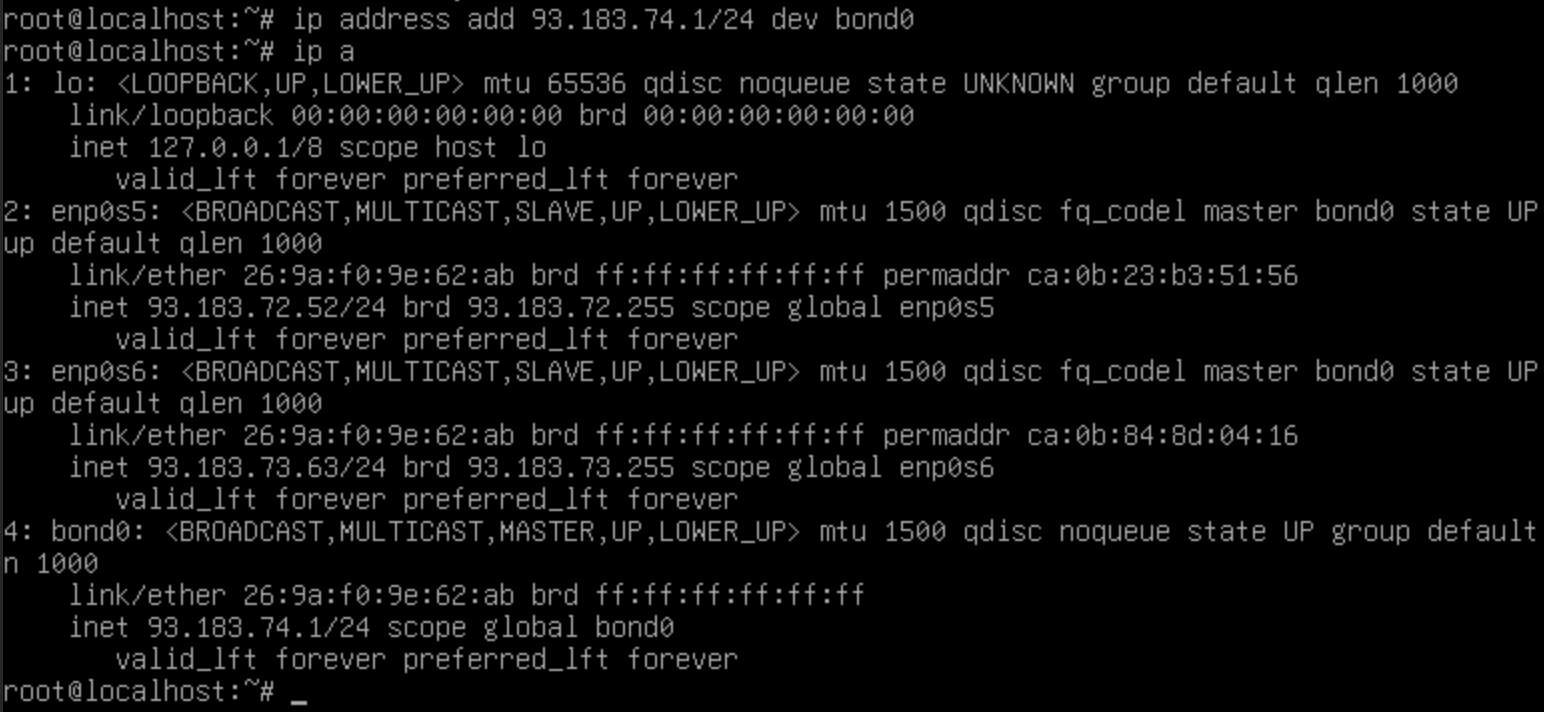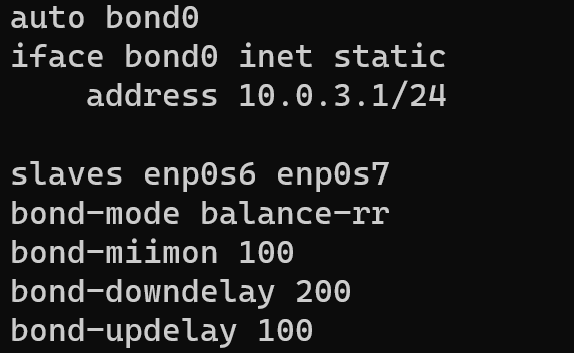Link aggregation on Linux, or bonding, is the process of combining multiple network links to increase bandwidth and link reliability in the Linux operating system. In this context, link aggregation allows efficient utilisation of available network resources, increasing data transfer rates and providing fault tolerance by distributing traffic across multiple connections.
This process can be performed using different technologies and protocols such as Link Aggregation (IEEE 802.3ad), Bonding (Linux bonding driver) and others.
Prepare the server
Imagine that your proxy server or router is Linux and you need to increase the speed of data transmission over the communication link, but physical possibilities do not allow you to choose fibre optics or other communication options. In this case we can use link aggregation! By creating a single logical interface and configuring it, we will be able to accept connections from two physical links, thus increasing the performance and resilience of the network.
For that create a VPS server using Serverspace control panel. Let's go to the left menu tab to servers, having previously selected the cloud platform and click on the Create Server button.

In its settings we will add two network interfaces, which we will later merge and configure for sharing!
Preparing for aggregation
Let's go to the server, having first connected according to the instructions described next to the control panel. If you are using your own virtual machine, skip the following command. The interfaces are automatically configured, thanks to scripts, in order to use them in manual mode let's go to the cloud configuration file. And write disable network synchronisation of the configuration:
echo "network: {config: disabled}" >> /etc/cloud/cloud.cfg.d/99-disable-network-config.cfg
Restart the network services so that the settings are applied:
systemctl daemon-reloadCheck the network settings and further disable network adapters that are required in the aggregation:
ip a 
In my case, these are interfaces enp0s5 and enp0s6, which need to be disabled with the appropriate command:
ifdown enp0s5 && ifdown enp0s6 Let's not forget to install the appropriate link aggregation software:
apt install ifenslave -y You can also specify a specific version when installing the package, if it is compatible with your system. In this case, the latest version of the package installs a module that allows you to manage network connectivity, including aggregation of communication links!
Configuring aggregation via the utility
In Linux, there are two ways to apply settings to the machine: via utilities, whose settings are usually valid until reboot, and via configuration files. The latter are already read every time the machine is started. However, nobody forbids you to use a utility to create an aggregated link, via autoload scripts!
To configure the first case, create a bond0 interface with the command:
ip link add bond0 type bond In order to assign interfaces to link aggregation, a new virtual interface must be enabled and the previously disabled interfaces for aggregation must be assigned to it:
ip link set bond0 up ip link set enp0s5 master bond0 ip link set enp0s6 master bond0 
Depending on which interfaces you have aggregated, you must now choose an IP address so that the hosts can reach you. If you added a network cable or a virtual interface to the same subnet, then specify the same IP address! If you are combining two interfaces from two different subnets, then note that you will now have one address for two networks and most likely the point of segmentation will be lost, you will need to use a different configuration with HSRP or other communication protocols. Let's add an address to the interface.
ip address add replace_by_your_ip dev bond0 And let's immediately look at the result of the configuration:
ip a 
In the screenshot we can see the state of the two aggregated interfaces as SLAVE, i.e. subordinate to the bond0 interface. This interface has the master parameter, which allows synchronised link management. However, these settings will be valid only until reboot, let's consider a permanent configuration.
Configuring aggregation via config
Initially, let's go to the configuration file and see the settings before the changes. Each OS may have different configuration paths and views, so take this into account when configuring. For Serverspace users it is necessary to go to the path and open the file:
nano /etc/network/interfaces.d/50-cloud-init For other Debian users, you can also go to the common settings file:
nano /etc/network/interfaces And paste in the following configuration:
auto bond0
iface bond0 inet static
address 10.0.3.1/24
slaves enp0s6 enp0s7
bond-mode balance-rr
bond-miimon 100
bond-downdelay 200
bond-updelay 100
It is necessary to replace the address, slaves fields, in which you specify the network interfaces for aggregation and the new IP for the virtual interface. Each of the other fields also has its own designation:
- auto bond0 - the line is intended for raising the interface at system startup;
- iface bond0 inet static - select static settings for the bond0 interface;
- bond-mode - this parameter defines the logic of operation of the virtual interface and can determine the type of traffic balancing,
- detection and management of connection state, fault tolerance;
- bond-miimon - defines the interval for monitoring the state of slave interfaces;
- bond-downdelay - defines the threshold value of the response delay before an interface is considered unavailable;
- bond-updelay - defines the threshold value of the interface uplink delay.
You must now reboot the network service to apply the settings from the file, having previously saved with the Ctrl + O combination:
systemctl restart networking After the configuration is complete, you must restart the network service to apply the changes. Now the communication links will be aggregated and work according to the set parameters.
Link aggregation in Linux is a powerful tool for improving network performance and reliability, and proper configuration allows you to efficiently use the available resources.



